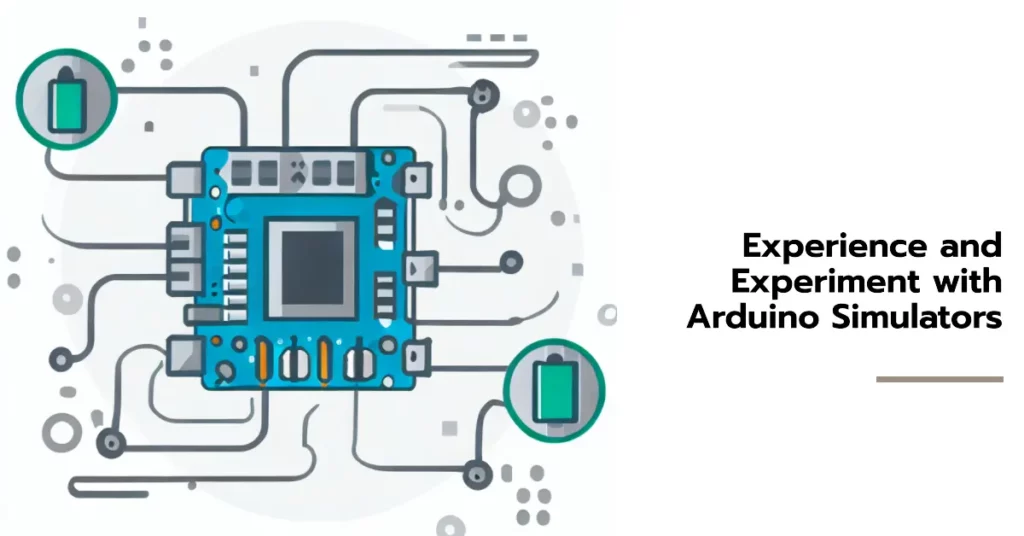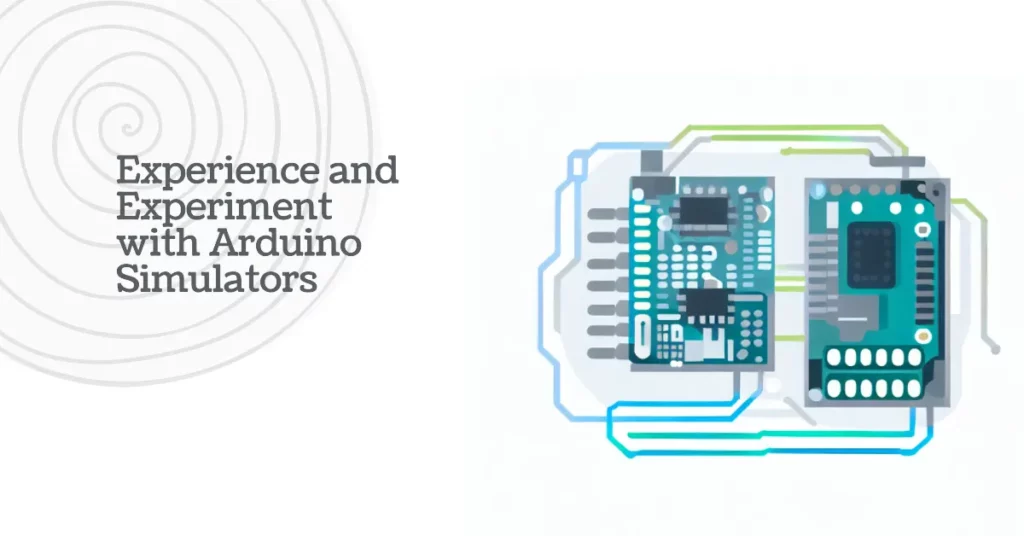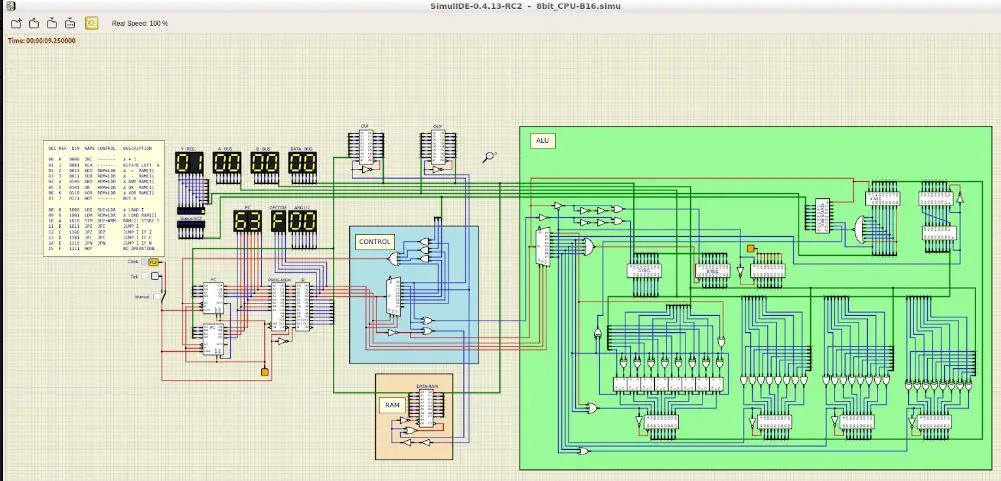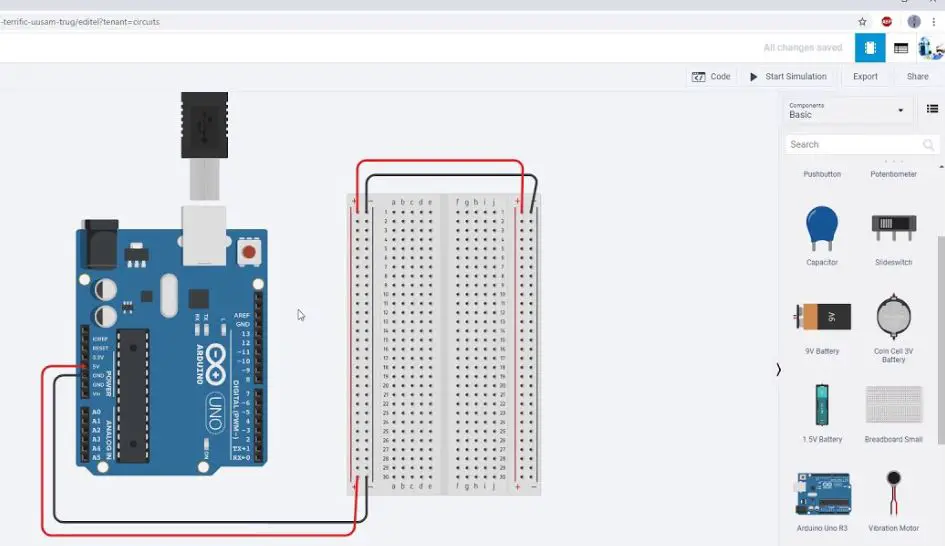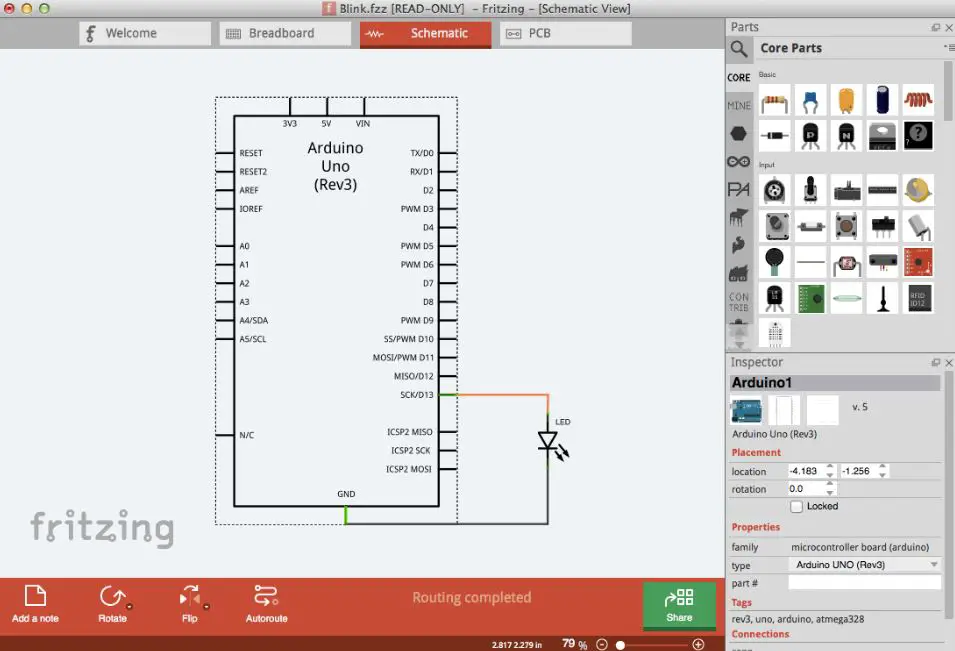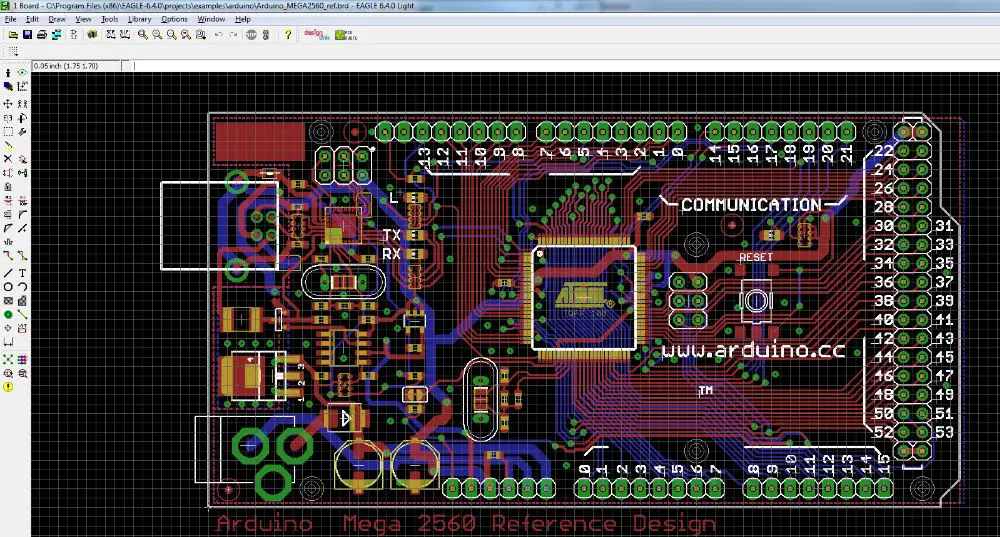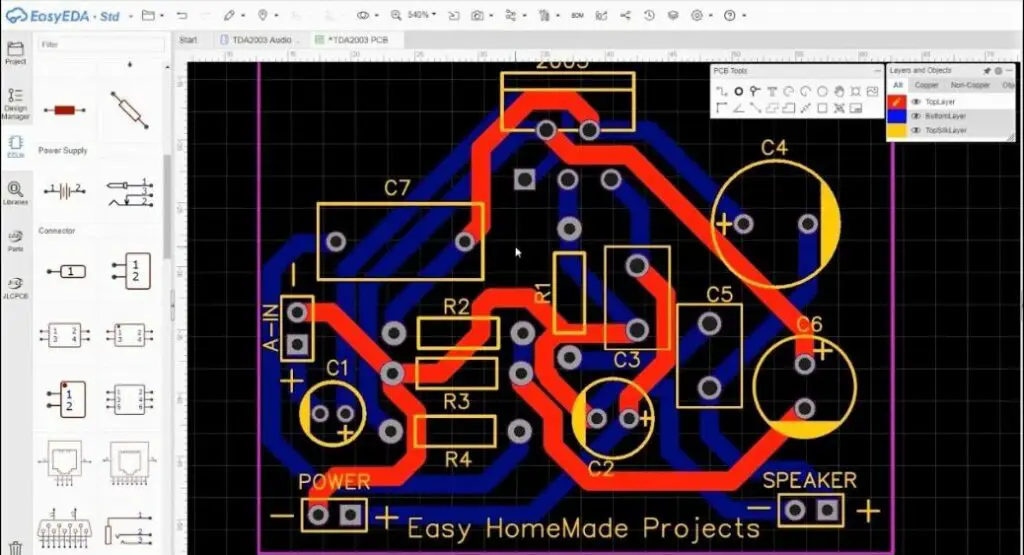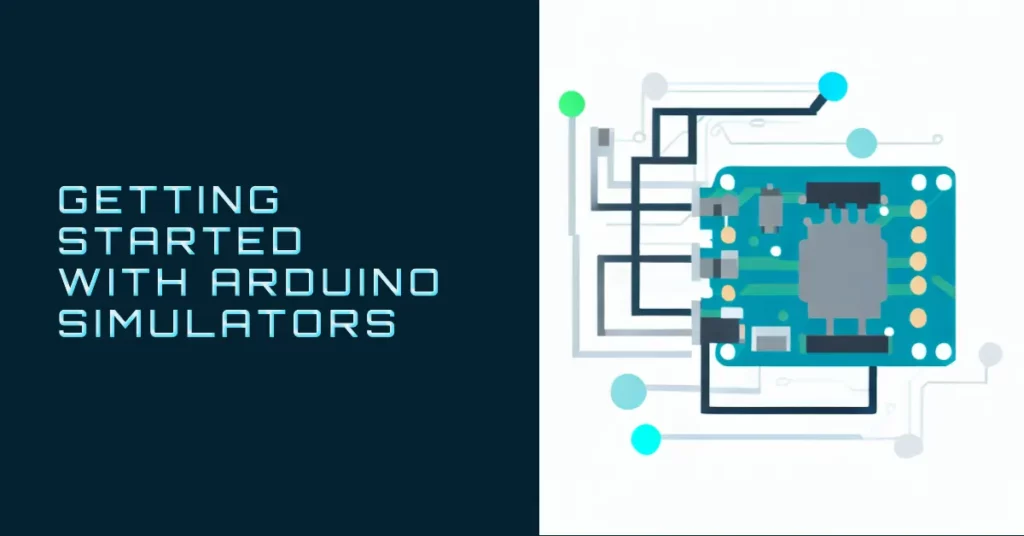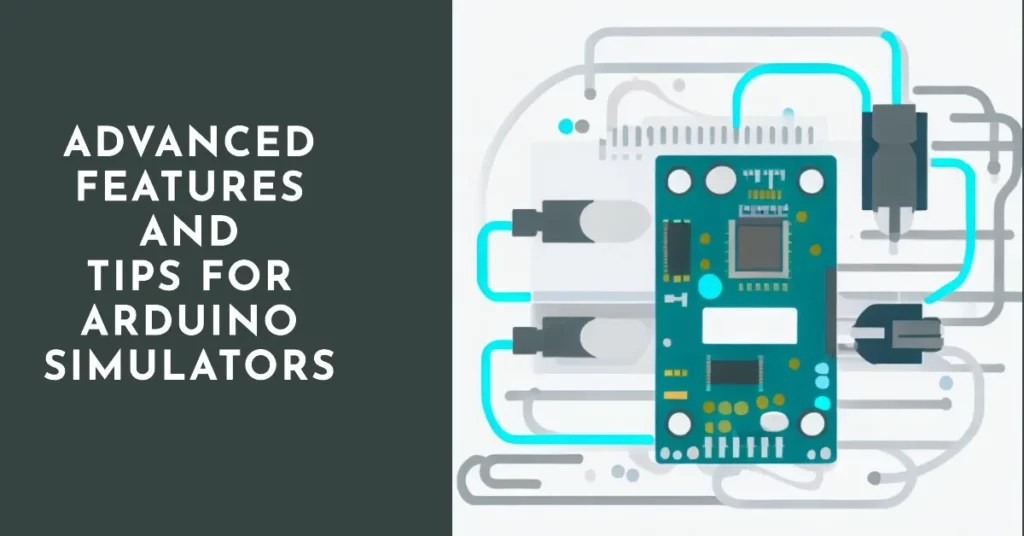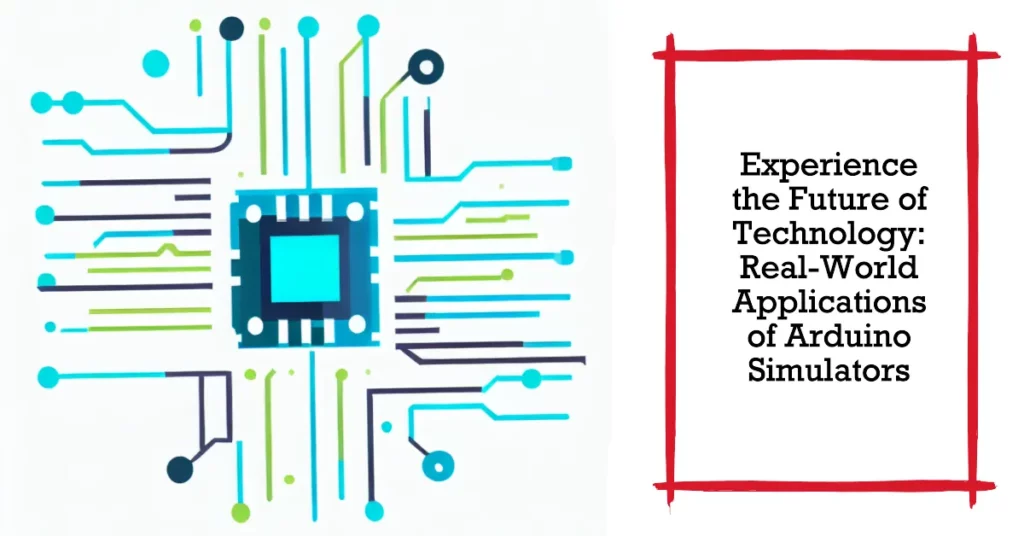Have you ever wanted to experiment with Arduino projects but don’t have the physical components or space to do so?
Or have you encountered frustrating issues when testing your code on real hardware, such as compatibility problems or electrical interference?💁
These challenges can discourage beginners or hobbyists from pursuing their creative ideas and learning opportunities with Arduino and limit the accessibility and scalability of projects. It can also waste time, money, and resources on troubleshooting, prototyping, or scaling up the projects.
Fortunately, a solution can overcome these obstacles and enhance the Arduino experience: Arduino simulators.
Arduino simulators are software tools that simulate the behavior of Arduino boards and circuits, allowing users to test and debug their code in a virtual environment without needing physical components or wiring.
Arduino simulators can also offer additional features, such as real-time visualization, data logging, and multi-device simulation, that are hard to achieve with real hardware alone.
In this article, we will introduce you to Arduino simulators and show you how to choose, install, and use some of the most popular ones available today. Whether a beginner or an experienced Arduino enthusiast, you will find valuable insights and tips to boost your productivity and creativity with Arduino simulators.
Let’s dive in!
What are Arduino simulators?🤷♂️
Arduino simulators are powerful software tools designed to replicate the functionality of Arduino microcontrollers and their associated components within a virtual environment.
These simulators provide an innovative approach to electronic prototyping, enabling users to design, simulate, and test Arduino-based circuits without physical hardware.
With Arduino simulators, users can construct circuits by connecting virtual components such as resistors, capacitors, sensors, and actuators. The simulators offer a graphical user interface where users can visually design circuits and simulate their behavior in real-time.
By leveraging the capabilities of these simulators, users can write and debug code, simulate inputs from sensors, and observe the output of their projects. This allows for rapid prototyping and testing, reducing the time and cost associated with physical iterations.
Arduino simulators cater to many users, including beginners, hobbyists, and professionals. They provide a safe environment for learning and experimentation, where users can explore the intricacies of electronics and programming without the risk of damaging physical components.
In conclusion, Arduino simulators are powerful tools that facilitate the virtual prototyping of Arduino projects, enabling users to design, simulate, and test circuits cost-effectively and efficiently. These simulators empower users to unleash their creativity and bring their Arduino-based ideas to life.
Benefits of Using Arduino Simulators
Using Arduino simulators comes with a plethora of advantages that significantly enhance the process of electronic prototyping and development. These simulators offer a virtual environment for designing and testing Arduino-based projects, revolutionizing the traditional approach to physical prototyping.
One of the notable benefits of using Arduino simulators is the cost-effectiveness they provide. Simulators save money on hardware expenses by eliminating the need for physical components. Additionally, they prevent the risk of damaging expensive components during testing and experimentation.
Arduino simulators also offer time-saving benefits. With the ability to rapidly iterate and test designs, users can make quick modifications to circuits, write and debug code, and observe the simulated behavior of their projects.
This expedites the development process, resulting in faster project completion and iteration. Furthermore, simulators create a safe environment for experimentation and testing. Users can simulate complex circuits, integrate virtual sensors and actuators, and evaluate project performance without real-world consequences.
This fosters a deeper understanding of electronic principles and facilitates early detection and resolution of potential issues. Collaboration and sharing capabilities are other advantages of Arduino simulators. Users can effortlessly share designs, code, and simulations, promoting collaboration and knowledge exchange within the Arduino community.
Best Arduino Simulators To Visualize, Simulate, Create
1. SimulIDE
SimulIDE stands out as one of the best Arduino simulators available, offering a comprehensive set of features that cater to the needs of both beginners and advanced users. With its intuitive interface and powerful simulation capabilities, SimulIDE is a go-to for electronic prototyping and circuit design.
One of the standout features of SimulIDE is its extensive component library, encompassing a wide range of Arduino boards, sensors, actuators, and other electronic components. This vast selection allows users to create intricate and realistic circuit simulations easily.
The simulator’s interactive interface enables users to visually design circuits, connect components, and simulate their behavior in real-time. With its user-friendly drag-and-drop functionality, circuit construction becomes a seamless experience.
SimulIDE supports various programming languages, including Arduino’s native language, C/C++, and Python. This flexibility empowers users to write and test code directly within the simulator, facilitating comprehensive prototyping and debugging.
Additionally, SimulIDE offers advanced simulation features like oscilloscopes, logic analyzers, and virtual terminals, enabling users to analyze and monitor the behavior of their circuits during simulation.
In conclusion, SimulIDE emerges as one of the best Arduino simulators due to its extensive component library, interactive interface, multi-language support, and advanced simulation features. Whether you’re a beginner or an experienced user, SimulIDE provides a powerful platform for exploring and refining your Arduino-based projects.
Pros:-
Extensive Component Library: SimulIDE offers a vast collection of Arduino boards, sensors, and other electronic components, allowing users to design intricate and realistic circuit simulations.
Intuitive Interface: SimulIDE provides a user-friendly interface with drag-and-drop functionality, making circuit construction and simulation setup straightforward and accessible for users of all levels.
Multi-Language Support: The simulator supports various programming languages, including Arduino’s native language, C/C++, and Python, enabling users to write and test code within the platform.
Real-Time Simulation: SimulIDE allows users to simulate their circuits in real-time, providing instant feedback and enabling comprehensive testing and debugging of Arduino projects.
Advanced Simulation Features: The simulator offers additional features such as oscilloscopes, logic analyzers, and virtual terminals, enhancing the analysis and monitoring capabilities during circuit simulation.
Cons:-
Limited Platform Availability: SimulIDE is primarily available for Windows, with limited support for other operating systems, potentially restricting user access on different platforms.
Learning Curve: While SimulIDE is user-friendly, beginners may still face a slight learning curve in understanding the various features and functionalities offered by the simulator.
Community Support: Although SimulIDE has a user community, it may not be as large or active as some other Arduino simulators, which could limit the availability of community-driven resources and support.
Despite these limitations, SimulIDE remains a powerful and feature-rich Arduino simulator with an intuitive interface, extensive component library, multi-language support, and advanced simulation capabilities, making it a top choice for electronic prototyping and circuit design.
2. Tinkercad Circuits
Tinkercad Circuits is a versatile and robust Arduino IO simulator, providing an array of features that make it an invaluable tool for electronic prototyping and circuit design.
With its user-friendly interface and comprehensive simulation capabilities, Tinkercad Circuits offers a seamless experience for beginners and experienced users.
One of the key strengths of Tinkercad Circuits as an Arduino IO simulator is its extensive component library, encompassing a wide range of Arduino boards, sensors, actuators, and other electronic components.
This vast selection empowers users to create intricate and realistic circuit simulations, mimicking the behavior of real-world projects. The intuitive interface of Tinkercad Circuits allows users to visually construct circuits, connect components, and simulate the interaction of IO (input/output) operations in real-time.
The drag-and-drop functionality streamlines the circuit design process and facilitates easy experimentation. Furthermore, Tinkercad Circuits supports the programming language of Arduino, enabling users to write and test code directly within the platform.
This capability enhances the flexibility and versatility of the simulator, enabling comprehensive prototyping and testing of IO functionalities.
In conclusion, Tinkercad Circuits stands out as a powerful Arduino IO simulator with its extensive component library, user-friendly interface, and support for Arduino programming. Whether you are a novice or an experienced user, Tinkercad Circuits provides an immersive platform for exploring and refining your Arduino-based projects, making it an invaluable tool for electronic enthusiasts and professionals alike.
Pros:-
Extensive Component Library:- Tinkercad Circuits offers a wide range of Arduino boards, sensors, actuators, and other electronic components, providing users with a diverse selection for creating realistic and complex circuit simulations.
User-Friendly Interface:- The intuitive interface of Tinkercad Circuits makes it easy for users to design circuits visually, connect components, and simulate IO operations, even for those with limited technical expertise.
Real-Time Simulation:- Tinkercad Circuits allows users to observe the behavior of their circuits and IO operations in real-time, providing instant feedback and facilitating quick testing and debugging.
Programming Language Support:- With support for Arduino’s programming language, users can write and test code directly within Tinkercad Circuits, enabling comprehensive prototyping and verification of IO functionalities.
Community and Educational Resources:- Tinkercad Circuits has a vibrant community and offers educational resources, tutorials, and project examples, fostering collaboration and providing valuable guidance for users at all skill levels.
Cons:-
Limited Advanced Features: Tinkercad Circuits may not offer as many advanced features and simulation options as other Arduino simulators, which could limit the complexity and depth of certain projects.
Internet Connectivity Requirement: Tinkercad Circuits operates as a web-based simulator, requiring a stable internet connection to access and use the platform effectively.
Dependence on Cloud Infrastructure: As a cloud-based simulator, Tinkercad Circuits relies on external servers and infrastructure, occasionally leading to downtime or dependency on third-party services.
Despite these limitations, Tinkercad Circuits is a user-friendly Arduino IO simulator with an extensive component library, real-time simulation capabilities, programming language support, and a supportive community.
It is an excellent tool for beginners and those looking to prototype and experiment with Arduino-based projects involving IO operations.
3. Virtual Breadboard
Virtual Breadboard is a powerful and feature-rich circuit lab Arduino simulator, offering a wide range of capabilities that make it a preferred choice for electronic enthusiasts and professionals alike.
With its comprehensive tools and user-friendly interface, Virtual Breadboard provides an easy virtual environment for designing, testing, and simulating Arduino circuits.
As a circuit lab Arduino simulator, Virtual Breadboard offers a virtual breadboard interface, mimicking the experience of working with physical components.
Users can place and connect virtual components, such as resistors, capacitors, and integrated circuits, on the virtual breadboard to create their circuits.
One of the standout features of Virtual Breadboard is its extensive library of pre-built Arduino boards, shields, and modules. This vast selection allows users to simulate and test their Arduino projects accurately and precisely.
Virtual Breadboard also provides a simulation engine that accurately models the behavior of the simulated circuits. Users can test and debug their Arduino code within the simulator, gaining confidence in their designs before moving to physical implementations.
Furthermore, Virtual Breadboard offers advanced features such as virtual instruments (oscilloscope, logic analyzer, etc.), customizable user interfaces, and support for additional hardware protocols, enhancing the versatility and functionality of the simulator.
In conclusion, Virtual Breadboard excels as a circuit lab Arduino simulator, offering a virtual breadboard interface, an extensive component library, accurate simulation capabilities, and advanced features.
Whether a beginner or an experienced user, Virtual Breadboard empowers you to design, test, and simulate Arduino circuits effectively and efficiently.
Pros:-
Virtual Breadboard Interface: The virtual breadboard interface of Virtual Breadboard closely resembles physical breadboards, providing a familiar and intuitive environment for designing and simulating Arduino circuits.
Extensive Component Library: Virtual Breadboard offers a vast library of pre-built Arduino boards, shields, and modules, allowing users to incorporate various components into their circuit simulations easily.
Accurate Simulation Engine: The simulation engine of Virtual Breadboard accurately models the behavior of the simulated circuits, enabling users to test and debug their Arduino code within the simulator before implementing it physically.
Advanced Features: Virtual Breadboard includes advanced features such as virtual instruments (oscilloscope, logic analyzer), customizable user interfaces, and support for additional hardware protocols, enhancing the versatility and functionality of the simulator.
User-Friendly Interface: Virtual Breadboard provides a user-friendly interface, making it accessible to users of all levels of expertise, including beginners.
Cons:-
Learning Curve: While Virtual Breadboard is user-friendly, beginners may still face a slight learning curve in understanding and utilizing its full features and functionalities.
Paid Version for Full Features: Some of the advanced features and capabilities of Virtual Breadboard may require a paid version, limiting access to certain functionalities for users on a tight budget.
Limited Platform Support: Virtual Breadboard is primarily available for Windows, with limited support for other operating systems, potentially restricting user access on different platforms.
4. Proteus
Proteus is a comprehensive software platform and versatile electronic design and simulation tool. With its extensive range of features and capabilities, Proteus has become a go-to choice for professionals and enthusiasts in electronics.
As a leading electronic design and simulation tool, Proteus offers a wide array of functionalities. It provides a robust environment for designing, testing, and simulating electronic circuits and systems.
The platform encompasses many components, including microcontrollers, sensors, actuators, and more, enabling users to create complex and realistic simulations.
One of the standout features of Proteus is its advanced simulation engine, which accurately models the behavior of the simulated circuits. Users can perform in-depth analysis, test different scenarios, and debug their designs, ensuring the functionality and reliability of their electronic projects.
Moreover, Proteus supports various programming languages, such as C/C++ and Assembly, allowing users to write and test code within the platform. This feature facilitates seamless integration between circuit design and software development, streamlining the development process.
Additionally, Proteus offers various interactive tools and features for visualizing and analyzing circuit behavior, including oscilloscopes, logic analyzers, and virtual instruments. These tools enhance the understanding and troubleshooting of complex circuits.
In conclusion, Proteus is a versatile and powerful electronic design and simulation software platform. With its extensive component library, advanced simulation engine, programming language support, and interactive tools, Proteus empowers users to bring their electronic projects to life accurately and efficiently.
Pros:-
Comprehensive Component Library: Proteus offers an extensive library of components, including microcontrollers, sensors, and actuators, providing users with a wide range of options for circuit design and simulation.
Advanced Simulation Capabilities: Proteus features a robust simulation engine that accurately models circuit behavior, enabling users to test and validate their designs before physical implementation.
Multi-Language Support: Proteus supports multiple programming languages, including C/C++ and Assembly, allowing users to write and test code within the platform, seamlessly integrating circuit design with software development.
Interactive Tools and Instruments: Proteus provides interactive tools and virtual instruments, such as oscilloscopes and logic analyzers, that enhance the visualization and analysis of circuit behavior, aiding in troubleshooting and optimization.
Professional-Grade Features: Proteus is widely used in the industry and academia, making it a reliable and trusted tool for professional electronic design and simulation.
Cons:-
Steep Learning Curve: Due to its wide range of features and functionalities, Proteus has a steep learning curve, requiring users to invest time and effort to master its capabilities fully.
Resource Intensive: Proteus can be resource-intensive, demanding significant computational power and memory, which may impact the performance of less powerful systems.
License Costs: Proteus is a commercial software, and accessing its full range of features may require purchasing a license, which can be a limitation for users on a tight budget.
Limited Platform Support: Proteus is primarily available for Windows, with limited support for other operating systems, potentially limiting its accessibility to users on different platforms.
Despite these considerations, Proteus remains a powerful and feature-rich software platform for electronic design and simulation, offering a comprehensive component library, advanced simulation capabilities, multi-language support, and professional-grade features.
5. Fritzing
Fritzing is a popular and versatile software tool for electronics prototyping and printed circuit board (PCB) design. Fritzing has become a go-to choice for beginners and experienced electronics enthusiasts with its user-friendly interface and comprehensive features.
As an electronics prototyping platform, Fritzing offers a range of functionalities to streamline the design process.
It provides a vast library of electronic components, including microcontrollers, sensors, and actuators, allowing users to design and connect circuit elements in their projects easily.
One of the standout features of Fritzing is its ability to transition from circuit design to PCB layout seamlessly. Users can create custom PCB designs, defining components’ shape, placement, and routing, thus transforming their prototypes into professional-looking PCBs.
With Fritzing, users can generate schematic diagrams, breadboard views, and PCB layouts simultaneously, offering a comprehensive visual representation of their projects.
This visual approach simplifies the understanding of circuit connections and aids in the debugging and testing process. Furthermore, Fritzing supports the export of designs to industry-standard file formats, enabling users to manufacture their PCBs or collaborate with professional PCB manufacturers.
In conclusion, Fritzing is a powerful and user-friendly tool for electronics prototyping and PCB design. With its extensive component library, seamless transition from circuit design to PCB layout, and comprehensive visual representation features, Fritzing empowers users to bring their electronic projects to life easily and professionally.
Pros:-
User-Friendly Interface: Fritzing features a user-friendly interface, making it accessible and intuitive for beginners and experienced users in electronics prototyping and PCB design.
Extensive Component Library: Fritzing offers a vast library of electronic components, including microcontrollers, sensors, and actuators, providing users with a wide range of options for designing and connecting circuits in their projects.
Seamless Circuit to PCB Transition: Fritzing enables a smooth transition from circuit design to PCB layout, allowing users to create custom PCB designs, define component placement and routing, and transform their prototypes into professional-looking PCBs.
Comprehensive Visual Representation: Fritzing provides schematic diagrams, breadboard views, and PCB layouts simultaneously, offering a comprehensive visual representation of projects. This visual approach simplifies circuit understanding, aids in debugging, and facilitates testing.
Export to Industry-Standard File Formats: Fritzing supports the export of designs to industry-standard file formats, enabling users to manufacture their PCBs or collaborate with professional PCB manufacturers.
Cons:-
Limited Advanced PCB Design Features: Fritzing may lack some advanced features in dedicated PCB design software, limiting the complexity and customization options for intricate PCB designs.
Less Suitable for High-Frequency and High-Performance Circuits: Fritzing suits simply to moderate complexity circuits. For high-frequency and high-performance circuits, specialized software may be more appropriate.
Limited Platform Support: Fritzing is primarily available for Windows, with limited support for other operating systems, potentially limiting accessibility for users on different platforms.
Learning Curve for Advanced Features: While Fritzing is user-friendly, utilizing its advanced features may require learning and exploration, especially for users new to electronics design and PCB layout.
Despite these considerations, Fritzing remains a valuable and user-friendly tool for electronics prototyping and PCB design, offering a wide component library, seamless transition to PCB layout, comprehensive visual representation, and export capabilities.
6. Autodesk EAGLE
Autodesk EAGLE is a powerful software tool for professional PCB design, offering comprehensive features and capabilities to meet the demands of electronics engineers and designers.
With its robust design environment and advanced functionality, Autodesk EAGLE has become a preferred choice in the industry. As a leading PCB design software, Autodesk EAGLE provides a seamless and efficient design process.
It offers an extensive component library with a wide range of electronic components, enabling users to easily integrate and design complex circuits.
One of the standout features of Autodesk EAGLE is its high-quality schematic editor. The schematic editor allows users to create and connect components visually, ensuring accurate representation and clarity in circuit design.
Moreover, Autodesk EAGLE provides a powerful PCB layout editor that enables users to design custom PCBs with precise control over component placement, routing, and board dimensions. Its advanced routing algorithms and design rule checks ensure optimal performance and reliability.
In addition to its design capabilities, Autodesk EAGLE offers advanced features such as 3D visualization, allowing users to visualize their PCB designs realistically and aiding in design validation and verification.
Furthermore, It supports seamless integration with manufacturing processes through its ability to generate industry-standard Gerber files, facilitating the production of high-quality PCBs.
In conclusion, Autodesk EAGLE is a powerful and feature-rich software tool for professional PCB design. With its extensive component library, high-quality schematic editor, advanced PCB layout capabilities, 3D visualization, and seamless manufacturing integration, Autodesk EAGLE empowers electronics engineers and designers to create precise and reliable PCB designs efficiently and effectively.
Pros:-
Comprehensive Design Environment: Autodesk EAGLE offers a comprehensive design environment with powerful tools for schematic editing and PCB layout, providing a seamless workflow for professional PCB design.
Extensive Component Library: The software provides an extensive component library, allowing users to easily access and integrate various electronic components into their designs.
Advanced PCB Layout Capabilities: Autodesk EAGLE offers advanced features for PCB layout, including precise component placement, routing algorithms, and design rule checks, ensuring optimal performance and reliability.
3D Visualization: The software enables users to visualize their PCB designs in 3D, providing a realistic representation of the final product and aiding in design validation and verification.
Manufacturing Integration: Autodesk EAGLE supports generating industry-standard Gerber files, facilitating seamless integration with manufacturing processes, and ensuring smooth production of high-quality PCBs.
Cons:-
Learning Curve: Autodesk EAGLE has a steep learning curve due to its advanced features and capabilities, requiring users to invest time and effort to become proficient in utilizing its full potential.
Resource Intensive: The software can be resource-intensive, demanding significant computational power and memory, which may impact the performance on less powerful systems.
Cost: Autodesk EAGLE is a commercial software with different licensing options, and the cost of the software may be a consideration for users on a tight budget.
Limited Platform Support: Autodesk EAGLE is primarily available for Windows and macOS, with limited support for Linux, potentially limiting its accessibility for users on different platforms.
Despite these considerations, Autodesk EAGLE remains a powerful and comprehensive software tool for professional PCB design, offering an extensive component library, advanced PCB layout capabilities, 3D visualization, and manufacturing integration features.
7. EasyEDA
EasyEDA emerges as a powerful and accessible free online Arduino simulator that revolutionizes how electronics enthusiasts and professionals design and test their projects.
With its user-friendly interface and comprehensive features, EasyEDA provides a convenient platform for simulating Arduino circuits without complex software installations.
As a free online Arduino simulator, EasyEDA offers a range of functionalities that cater to users’ needs at all levels of expertise. The platform provides a virtual environment where users can design and simulate Arduino circuits, test code, and verify their projects’ functionality.
One of the standout features of EasyEDA is its intuitive and interactive interface, which simplifies the process of creating and connecting components in Arduino circuits. The drag-and-drop functionality, combined with an extensive library of Arduino boards, sensors, and actuators, enhances the design experience.
Moreover, EasyEDA allows users to write and test Arduino code directly within the platform. This capability enables users to prototype and debug their Arduino projects seamlessly, all in one place.
Being an online simulator, EasyEDA offers the convenience of accessibility from any internet-connected device, eliminating the need for software installations and ensuring a hassle-free experience.
In conclusion, EasyEDA is a remarkable free online Arduino simulator, empowering electronics enthusiasts and professionals to easily design, simulate, and test projects.
With its user-friendly interface, extensive component library, code integration capabilities, and online accessibility, EasyEDA provides a valuable platform for unleashing the full potential of Arduino simulation cost-effectively and conveniently.
Pros:-
User-Friendly Interface: EasyEDA offers a user-friendly and intuitive interface, making it accessible to users of all levels of expertise, including beginners in circuit design and PCB layout.
Convenient Online Platform: Being an online tool, EasyEDA allows users to access their projects from any internet-connected device, providing convenience and flexibility in the design process.
Drag-and-Drop Functionality: EasyEDA’s drag-and-drop interface simplifies creating and connecting components in circuit designs, enhancing the ease of use and productivity.
Extensive Component Library: EasyEDA provides a vast component library, offering a wide range of electronic components for users to integrate into their designs, ensuring flexibility and variety directly.
Integrated Simulation Capabilities: EasyEDA includes built-in circuit simulation capabilities, enabling users to test and verify their designs, identify potential issues, and optimize circuit performance before fabrication.
Cons:-
Limited Advanced Features: EasyEDA may lack some advanced features in dedicated software, limiting the complexity and customization options for intricate circuit designs and PCB layouts.
Online Dependence: EasyEDA requires a stable internet connection as an online platform, which can be a limitation in areas with unreliable or limited internet access.
Learning Curve for Advanced Features: While EasyEDA is user-friendly, utilizing its advanced features may require learning and exploration, especially for users new to circuit design and PCB layout.
Limited Platform Support: EasyEDA is primarily designed for web browsers and may not offer the same level of compatibility and performance on all operating systems and devices.
Despite these considerations, EasyEDA remains a convenient and user-friendly online platform for circuit design and PCB layout. With its intuitive interface, extensive component library, integrated simulation capabilities, and online accessibility, EasyEDA provides a valuable tool for electronic enthusiasts and professionals.
8. CircuitLab
CircuitLab stands at the forefront of innovative software tools, revolutionizing circuit design and analysis. With its advanced features and user-friendly interface, CircuitLab empowers engineers, students, and hobbyists to easily explore, simulate, and refine their circuits.
As a leading circuit design and analysis platform, CircuitLab offers a comprehensive set of tools and capabilities. It provides an intuitive schematic editor where users can visually design and connect circuit components, ensuring accurate and efficient circuit representation.
One of the standout features of CircuitLab is its robust simulation engine. Users can simulate the behavior of their circuits in real-time, allowing for thorough analysis and optimization.
The simulator accurately models components and their interactions, enabling users to predict circuit performance before physical implementation.
CircuitLab also offers a vast component library encompassing various electronic components, including passive and active elements, sensors, and microcontrollers. This extensive library ensures that users have ample options when designing their circuits.
Furthermore, CircuitLab provides interactive graphing and measurement tools that allow users to visualize and analyze circuit behavior. Users can plot waveforms, perform AC and DC analysis, and obtain valuable insights into circuit characteristics.
In conclusion, CircuitLab is a powerful and user-friendly circuit design and analysis platform. With its intuitive schematic editor, robust simulation engine, extensive component library, and advanced graphing tools, CircuitLab empowers users to explore and optimize their circuits, making it an invaluable tool for professionals and enthusiasts.
Pros:-
Advanced Simulation Engine: CircuitLab boasts a robust simulation engine that accurately models circuit behavior, allowing users to predict and analyze circuit performance before physical implementation.
Intuitive Schematic Editor: The user-friendly interface of CircuitLab’s schematic editor simplifies the process of designing and connecting circuit components, ensuring accurate and efficient circuit representation.
Extensive Component Library: CircuitLab offers a vast library of electronic components, providing users with various options when designing their circuits.
Interactive Graphing and Measurement Tools: CircuitLab provides interactive graphing and measurement tools, enabling users to visualize and analyze circuit behavior, plot waveforms, and perform AC and DC analysis.
Collaboration and Sharing: CircuitLab allows users to share and collaborate on circuit designs, fostering a collaborative environment for electronics enthusiasts and professionals.
Cons:-
Limited Free Features: While CircuitLab offers a free version, some advanced features and capabilities may be limited to premium subscription plans.
Learning Curve for Advanced Features: Utilizing the advanced features of CircuitLab may require some learning and exploration, particularly for users who are new to circuit design and analysis.
Limited Platform Support: CircuitLab is primarily a web-based tool, and its compatibility and performance may vary across different operating systems and devices.
Dependence on Internet Connectivity: As an online platform, CircuitLab relies on a stable internet connection for access and usage, which may be a limitation in areas with unreliable or limited internet access.
Despite these considerations, CircuitLab remains a powerful and user-friendly circuit design and analysis platform, offering advanced simulation capabilities, an intuitive schematic editor, an extensive component library, interactive graphing tools, and collaboration features.
9. Multisim
Multisim is a leading software tool in circuit simulation and analysis, offering a comprehensive suite of features that empower engineers, researchers, and students to design, test, and optimize electronic circuits with precision and efficiency.
As a powerful circuit simulation software, Multisim provides a rich set of tools for designing and analyzing circuits. Its intuitive schematic capture interface enables users to construct complex circuit designs visually, ensuring accurate representation and ease of use.
One of the standout features of Multisim is its advanced simulation engine, which accurately models electronic components’ behavior and interactions. Users can perform various types of analysis, such as transient, AC, and DC analysis, to evaluate circuit performance and identify potential issues.
Multisim offers an extensive library of electronic components and models, including semiconductors, passive components, and integrated circuits, enabling users to incorporate various devices into their designs.
This comprehensive component selection enhances the versatility and flexibility of circuit simulations. Furthermore, Multisim supports seamless integration with real-world instruments through its Virtual Instrumentation capabilities.
Users can interface their circuit designs with external hardware, such as oscilloscopes and function generators, to create a comprehensive virtual lab environment.
In conclusion, Multisim is a powerful and versatile circuit simulation and analysis software tool. With its intuitive schematic capture interface, advanced simulation engine, extensive component library, and virtual instrumentation capabilities, Multisim empowers users to design and optimize electronic circuits precisely and confidently, making it an invaluable tool for engineers and researchers.
Pros:-
Advanced Simulation Capabilities: Multisim offers an advanced simulation engine that accurately models circuit behavior, allowing users to perform various types of analysis and evaluate circuit performance.
Intuitive Schematic Capture Interface: The user-friendly interface of Multisim’s schematic capture simplifies designing complex circuits, ensuring accurate representation and ease of use.
Extensive Component Library: Multisim provides a comprehensive library of electronic components and models, offering users a wide range of options for incorporating devices into their circuit designs.
Virtual Instrumentation: Multisim supports virtual instrumentation, allowing users to interface their circuit designs with real-world instruments, creating a comprehensive virtual lab environment.
Integration with Real-World Hardware: Multisim enables seamless integration with external hardware, such as oscilloscopes and function generators, enhancing the versatility and functionality of circuit simulations.
Cons:-
Learning Curve: Due to its advanced features and capabilities, Multisim has a learning curve, particularly for users new to circuit simulation and analysis.
Resource Intensive: Multisim can be resource-intensive, requiring significant computational power and memory, which may impact the performance on less powerful systems.
Cost: Multisim is commercial software, and accessing its full range of features may require purchasing a license, which can be a limitation for users on a tight budget.
Platform Limitations: Multisim is primarily available for Windows, with limited support for other operating systems, potentially limiting its accessibility to users on different platforms.
Despite these considerations, Multisim remains a powerful and versatile software tool for circuit simulation and analysis, offering advanced simulation capabilities, an intuitive schematic capture interface, an extensive component library, and virtual instrumentation features.
Getting Started with Arduino Simulators
Arduino simulators open up a world of possibilities for electronics enthusiasts and beginners seeking to experiment with Arduino projects without needing physical components.
Arduino simulators offer a virtual environment where users can design, code, and test their projects, providing a cost-effective and convenient alternative to traditional hardware-based prototyping.
To embark on your journey with Arduino simulators, familiarize yourself with the available options.
Popular simulators such as SimulIDE, Tinkercad Circuits, and Virtual Breadboard offer diverse features and interfaces tailored to user preferences and requirements.
Begin by choosing the simulator that aligns with your goals and skill level. Consider user interface, component library, simulation capabilities, and programming language support.
Once you’ve selected a simulator, explore the provided documentation and tutorials to grasp the software’s functionalities and features. Learning about concepts like circuit design, component connections, and code implementation will form the foundation of your virtual prototyping experience.
Next, experiment with simple projects to gain hands-on experience and familiarize yourself with the simulator’s interface. Start with basic LED blinking or sensor interfacing projects and gradually progress to more complex circuits and coding challenges.
Don’t hesitate to leverage online communities and forums dedicated to Arduino simulators. Engaging with fellow enthusiasts can provide valuable insights, troubleshooting assistance, and inspiration for your projects.
Remember, Arduino simulators are not limited to software alone. Some simulators offer hardware-in-the-loop capabilities, enabling you to connect real-world components and peripherals to enhance your virtual prototyping experience.
In conclusion, getting started with Arduino simulators offers an exciting journey into the virtual realm of electronics. By selecting a suitable simulator, exploring documentation and tutorials, experimenting with projects, and engaging with the community, you can unlock the full potential of virtual prototyping and bring your Arduino ideas to life without physical constraints.
So, dive in and embrace the world of Arduino simulation!
Advanced Features and Tips for Arduino Simulators
Exploring the advanced features and tips of Arduino simulators takes your virtual prototyping experience to the next level, allowing you to maximize your creativity and efficiency in designing and testing Arduino projects.
Here are some key features and tips to enhance your simulation journey.
Real-Time Simulation:- Take advantage of real-time simulation capabilities offered by Arduino simulators. This allows you to observe the behavior of your circuits in real-time, making it easier to identify and rectify any issues.
External Hardware Integration:- Some simulators support hardware-in-the-loop integration, enabling you to connect external hardware components to the simulator. This lets you interface with real-world sensors, actuators, and communication modules, providing a more realistic simulation experience.
Virtual Instrumentation:- Explore the virtual instrumentation tools available in the simulator. These tools simulate virtual oscilloscopes, logic analyzers, and other instruments, helping you analyze and monitor the behavior of your circuits.
Code Profiling and Debugging:- Utilize the simulator’s built-in code profiling and debugging features to identify performance bottlenecks and troubleshoot code issues. This allows you to optimize your Arduino programs for improved efficiency.
Parameter Sweeping: Experiment with parameter sweeping capabilities, allowing you to vary component values or input conditions systematically. This helps you analyze the impact of different parameters on your circuit’s behavior.
Sharing and Collaboration:- Many simulators provide features for sharing and collaboration, allowing you to collaborate with others, share your projects, and seek feedback from the community. This fosters a collaborative environment and promotes knowledge exchange.
Advanced Circuit Analysis:- Explore the advanced circuit analysis features of the simulator, such as frequency response analysis or noise analysis, to gain deeper insights into your circuit’s performance in different scenarios.
Remember to stay updated with the simulator’s documentation, participate in online forums, and continually challenge yourself with complex projects.
By harnessing the advanced features and tips of Arduino simulators, you can unlock the full potential of virtual prototyping and elevate your projects to new heights of creativity and functionality.
Real-World Applications of Arduino Simulators
The real-world applications of Arduino simulators span various industries and domains, showcasing the versatility and practicality of these virtual prototyping tools.
Let’s explore some notable examples where Arduino simulators find valuable applications.
Education and Learning:- Arduino simulators are powerful educational tools, enabling students to learn and experiment with electronics and programming concepts in a virtual environment. They provide a safe and cost-effective platform for hands-on learning, fostering creativity and problem-solving skills.
Prototyping and Design Validation:- Arduino simulators offer a valuable means of prototyping and validating designs before moving to physical implementation.
Engineers and designers can simulate circuits, test different configurations, and refine their designs without physical components, reducing time and cost.
Internet of Things (IoT) Development:- Arduino simulators play a crucial role in IoT development. They allow developers to simulate the interaction between Arduino boards and various IoT devices and sensors, facilitating the design and testing of IoT applications and protocols.
Embedded Systems Development:- Simulating Arduino circuits is essential in embedded systems development. Simulators enable engineers to verify the functionality and performance of embedded systems, test code, and validate the integration of hardware and software components.
Fault Diagnosis and Troubleshooting:- Arduino simulators aid in fault diagnosis and troubleshooting by simulating faulty scenarios or unusual conditions.
Engineers can use simulators to recreate and analyze specific problems, accelerating the identification and resolution of issues.
Concept Validation for Startups:- Arduino simulators provide an accessible and cost-effective means for startups to validate their product concepts.
By simulating and testing the functionality of their proposed solutions, startups can gather valuable insights and make informed decisions before investing in physical prototypes.
The real-world applications of Arduino simulators continue to expand as technology advances. From education and prototyping to problem-solving and concept validation, these virtual tools empower individuals and industries to innovate, optimize, and bring their ideas to life.
📗FAQ’s
Absolutely! Arduino enthusiasts and developers can take advantage of various Arduino simulators available in the market.
These simulators provide a virtual environment where users can design, test, and simulate Arduino projects without physical hardware. With an Arduino simulator, users can replicate the behavior of Arduino boards, experiment with circuit designs, and test their code for functionality and performance.
Simulators like SimulIDE, Tinkercad Circuits, and Virtual Breadboard offer intuitive interfaces, extensive component libraries, and simulation capabilities to enhance the virtual prototyping experience.
An Arduino simulator allows users to save time, reduce costs, and iterate on their projects more efficiently before moving to physical implementation.
So, dive into the world of Arduino simulation and unlock the possibilities for innovation and creativity!
Here’s a table showcasing some of the best Arduino simulators based on user ratings:-
| Arduino Simulator | User Rating (out of 5) |
|---|---|
| SimulIDE | 4.8 |
| Tinkercad Circuits | 4.7 |
| Virtual Breadboard | 4.6 |
| Proteus | 4.5 |
| Fritzing | 4.4 |
| Autodesk EAGLE | 4.3 |
| 123D Circuits | 4.2 |
| EasyEDA | 4.1 |
| CircuitLab | 4.0 |
| Multisim | 3.9 |
What is the best free Arduino simulator?
When selecting the best free Arduino simulator, several options stand out.
Tinkercad Circuits is widely regarded as one of the top choices for beginners due to its user-friendly interface and extensive component library.
EasyEDA is another powerful simulator offering advanced features and online accessibility. Virtual Breadboard is an excellent choice for those seeking a comprehensive platform with a vast user community.
SimulIDE also deserves mention for its intuitive interface and real-time simulation capabilities. Ultimately, the best free Arduino simulator depends on individual preferences and project requirements.
It is recommended to explore different simulators and assess their features, ease of use, and compatibility to find the one that best suits your needs.
Where do I simulate Arduino projects?
Simulating Arduino projects can be done in various environments, providing flexibility and convenience for users.
Online simulators like Tinkercad Circuits, EasyEDA, and Virtual Breadboard offer web-based platforms where users can design, code, and simulate Arduino projects directly in their browsers.
Alternatively, desktop simulators such as SimulIDE and Proteus provide downloadable software for offline simulation.
These simulators offer comprehensive features, component libraries, and simulation capabilities to replicate real-world Arduino circuits.
Whether you choose an online or desktop simulator, both options provide a virtual space to easily prototype, test, and refine your Arduino projects.
Why Use Arduino Simulator?
Arduino simulators are valuable tools for both beginners and experienced users of the Arduino platform. They provide a virtual environment for designing, testing and debugging Arduino projects before deploying them on physical hardware.
Simulators offer numerous benefits, including:
Time and Cost Efficiency: Simulating Arduino circuits eliminate the need for physical components, saving time and money.
Design Iteration: Simulators enable rapid prototyping and iteration, allowing users to refine their designs without physical modifications.
Error Detection: By simulating code execution and circuit behavior, simulators can identify errors and help troubleshoot issues.
Learning and Education: Simulators provide an interactive learning environment for Arduino programming and electronics concepts.
Complex System Testing: Simulators allow users to test complex systems involving multiple Arduino boards and sensors.
Is Tinkercad an Arduino?
No, Tinkercad is not an Arduino but an online platform with a virtual Arduino simulator. Tinkercad offers a user-friendly interface for designing and simulating Arduino projects, making it accessible to beginners.
What is Arduino Proteus?
Arduino Proteus is a software package that combines the capabilities of Arduino and Proteus Design Suite. It allows users to design Arduino-based circuits and simulate their behavior within the Proteus environment. This integration facilitates comprehensive testing and debugging of Arduino projects.
Does NASA Use Arduino?
While Arduino is popular among hobbyists and educational institutions, NASA typically relies on more specialized hardware and software solutions for their space missions.
However, Arduino’s ease of use and flexibility make it an excellent platform for prototyping and experimentation, even if it may not be used directly by NASA.
Where Can I Practice Arduino?
There are several resources available for practicing Arduino programming and circuit design. Online platforms such as Tinkercad, Arduino Create, and Codebender provide virtual environments for building and testing Arduino projects.
Physical Arduino starter kits with tutorials and sample projects can also be purchased for hands-on practice.
Is Arduino in C++ or C?
Arduino uses a variant of the C++ programming language. It provides a simplified programming interface and a set of libraries specifically tailored for microcontroller development. While Arduino code is written in a C++ dialect, many standard C libraries and functions are also compatible.
Why Is Arduino IDE the Best?
Arduino IDE (Integrated Development Environment) is widely regarded as an excellent choice for programming Arduino boards. Its simplicity, user-friendly interface, and extensive community support make it a top choice for beginners.
Arduino IDE provides essential features like code editing, compilation, and uploading firmware to the Arduino board, making it a powerful tool for developing Arduino projects.
Why Is Arduino Used in Robotics?
Arduino’s popularity in robotics stems from its versatility, ease of use, and extensive community support.
Arduino boards provide a reliable platform for controlling motors, sensors, and actuators in robotics applications. They can interface with various components, making Arduino a preferred choice for hobbyist and educational robotics projects.
What is Tinkercad Arduino Simulator?
Tinkercad Arduino Simulator is an integral part of the Tinkercad online platform. It allows users to design, simulate, and test Arduino-based circuits virtually.
The simulator provides a comprehensive environment for building and experimenting with Arduino projects without physical components.
What Coding Language is Tinkercad?
Tinkercad Arduino Simulator supports coding in a simplified C++ programming language.
It provides an easy-to-use drag-and-drop interface for placing and connecting virtual components and a text-based editor for writing Arduino code.
Is Arduino a Microcontroller?
Yes, Arduino is a microcontroller platform. It consists of a physical microcontroller board (such as Arduino Uno, Arduino Nano, etc.) and an integrated development environment (Arduino IDE) for programming and uploading code to the board.
The microcontroller on the Arduino board executes the uploaded code and controls various hardware components connected to it.
What is LoRa Arduino?
LoRa (Long Range) Arduino integrates LoRa wireless communication technology with Arduino boards. LoRa enables long-range, low-power communication between devices, making it suitable for applications like IoT (Internet of Things) and remote sensing.
What is Simulink Arduino?
Simulink Arduino is an extension of the Simulink platform, a graphical programming environment developed by MathWorks. Simulink Arduino allows users to design and simulate Arduino-based systems using a visual block diagram approach.
It provides an intuitive way to model and test control systems and algorithms before deployment on physical Arduino hardware.
Can We Use Arduino in Multisim?
Yes, Arduino can be used in Multisim, a powerful circuit simulation software. Multisim offers an Arduino Simulation Interface that allows users to incorporate Arduino boards into their circuit designs.
This integration enables comprehensive simulations of Arduino-based projects within the Multisim environment.
Is Arduino AC or Python?
Arduino is not directly associated with a specific programming language. However, Arduino programming typically utilizes a simplified version of the C++ language.
Python can be used with Arduino for communication and control purposes, but the primary code execution on the Arduino board is done in C++.
Who Owns Arduino?
Arduino is an open-source hardware and software platform, so a single entity does not own it. The Arduino project is maintained and developed by the Arduino community, which includes a team of core developers and a vast network of contributors worldwide.
Do Professional Engineers Use Arduino?
Professional engineers use Arduino in various domains, including prototyping, automation, and IoT applications.
Arduino’s ease of use, flexibility, and extensive library support makes it a valuable tool for rapid prototyping and proof-of-concept development, even for professionals.
Is Arduino Used in Real Life?
Yes, Arduino is widely used in real-life applications. It finds applications in home automation, robotics, industrial control systems, scientific instrumentation, and more.
Its affordability, simplicity, and versatility make it accessible to many users, from hobbyists to professionals.
How Fast Can I Learn Arduino?
The learning curve for Arduino depends on your existing programming and electronics knowledge. With a basic understanding of programming concepts, you can build simple Arduino projects relatively quickly.
However, mastering advanced Arduino programming and circuit design may take weeks or months of dedicated learning and practice.
Which Arduino is Mostly Used?
Arduino Uno is among the most commonly used and widely recognized among the various Arduino board models available. Its simplicity, extensive community support, and availability of shields and accessories make it a popular choice for beginners and experienced users.
Should I Learn Arduino?
Learning Arduino can benefit anyone interested in electronics, programming, or building interactive projects.
Arduino provides a hands-on introduction to microcontrollers and helps develop skills that apply to various fields, including robotics, IoT, and automation.
What are the Disadvantages of Arduino?
While Arduino is a powerful and accessible platform, it has some limitations.
These include:-
Limited Processing Power: Arduino boards have limited computational capabilities compared to more advanced microcontrollers or single-board computers.
Limited Memory: Arduino boards have limited program memory and RAM, which can restrict the complexity of projects.
Lack of Native Networking: Arduino boards have limited built-in networking capabilities, requiring additional components for internet connectivity.
Not Suitable for High-Speed Applications: Arduino may not be suitable for high-speed applications or real-time signal processing due to its relatively low clock speed.
Not Industry-Grade: While Arduino is widely used for prototyping, it may not meet the stringent requirements of industrial-grade applications.
Is Arduino IDE Written in Java?
Yes, the Arduino IDE is primarily written in Java. It provides a cross-platform environment that runs on Windows, macOS, and Linux operating systems.
The underlying core libraries and tools for compiling and uploading code to Arduino boards are in C++.
What Language is Arduino Written In?
The core libraries and firmware for Arduino boards are primarily written in C and C++. Arduino’s programming interface, including the Arduino IDE, is also built using Java.
How Many Types of Arduino Do We Have?
Arduino offers a variety of board models, each with different features and specifications to cater to different project requirements.
Some popular Arduino board models include Arduino Uno, Arduino Nano, Arduino Mega, Arduino Due, and Arduino Leonardo. Additionally, specialized Arduino-compatible boards are designed for specific purposes, such as the Arduino Lilypad for wearable electronics.
Why Arduino is Not Used in Industry?
While Arduino is widely used for prototyping and educational purposes, it may not be suitable for all industrial applications.
Factors that limit its adoption in the industry include its relatively limited processing power, memory constraints, lack of robustness, and a requirement for additional components to meet industrial standards. For industrial applications, dedicated microcontrollers or specialized hardware platforms are often preferred.
Who Uses Arduino?
Various individuals and organizations use Arduino, including hobbyists, makers, educators, students, artists, engineers, and researchers. It has gained popularity for its ease of use, affordability, and extensive community support.
Do Companies Use Arduino?
Yes, companies utilize Arduino for various purposes, such as prototyping, proof-of-concept development, and low-volume production runs.
Arduino’s accessibility, compatibility with existing electronics components, and a large community of developers make it an attractive choice for rapid product development and experimentation.
Is Tinkercad Free or Paid?
Tinkercad offers both free and paid subscription plans. The free plan provides access to basic features, including the Arduino simulator.
The paid subscription, called Tinkercad Premium, offers additional features and benefits, such as more storage space and advanced circuit simulation capabilities.
Why is Tinkercad So Good?
Tinkercad is a powerful and user-friendly platform for 3D design, electronics, and Arduino simulation.
Its key strengths include the following:-
Accessibility: Tinkercad’s intuitive interface and drag-and-drop functionality makes it accessible to beginners without design experience.
Integration: Tinkercad seamlessly integrates 3D modeling, electronics, and Arduino simulation in a single platform.
Community and Resources: Tinkercad boasts a large online community that shares designs, tutorials, and resources, fostering collaborative learning and inspiration.
Educational Focus: Tinkercad’s educational initiatives, including lesson plans and challenges, make it a popular choice for educators and students.
Who Uses Tinkercad?
Tinkercad is used by many users, including students, educators, hobbyists, and professionals. It is particularly popular in educational settings, where it serves as a valuable tool for teaching and learning 3D design, electronics, and Arduino.
Is Tinkercad Better than AutoCAD?
Tinkercad and AutoCAD serve different purposes and target different user bases. Tinkercad focuses on simplified 3D modeling, electronics design, and Arduino simulation, emphasizing ease of use and accessibility.
AutoCAD, on the other hand, is a professional-grade computer-aided design (CAD) software used for complex architectural, engineering, and industrial design projects.
The choice between Tinkercad and AutoCAD depends on the specific requirements and level of expertise needed for the task at hand.
Is Tinkercad a CAD Software?
Yes, Tinkercad is considered CAD (Computer-Aided Design) software. It allows users to create and manipulate digital models in a three-dimensional space, allowing for the design of various objects, including mechanical parts, prototypes, and more.
Can I Use Python in Tinkercad?
Tinkercad primarily focuses on 3D modeling and electronics design rather than programming.
While it does not have direct support for Python programming, you can utilize Python in conjunction with Tinkercad by using Python libraries and scripts to control Arduino-based projects outside the Tinkercad environment.
What is the Most Powerful Arduino?
The Arduino Due is considered one of the most powerful Arduino board models. It features a 32-bit ARM Cortex-M3 processor, higher clock speed, increased memory, and additional I/O capabilities compared to other Arduino boards.
The Arduino Due is well-suited for applications that require more computational power and advanced features.
Who Invented Arduino?
Arduino was invented by a group of developers consisting of Massimo Banzi, David Cuartielles, Tom Igoe, Gianluca Martino, and David Mellis. They released the first Arduino board 2005 as an open-source platform for artists, designers, and hobbyists to create interactive projects.
What is Raspberry Pi vs Arduino?
Raspberry Pi and Arduino are popular platforms for electronics projects, but they differ in their capabilities and design philosophy.
Raspberry Pi is a single-board computer that runs a full operating system (such as Linux) and can run complex applications, handle multimedia, and connect to networks.
On the other hand, Arduino is a microcontroller platform specifically designed for controlling hardware devices and interacting with the physical world. Arduino is often used for simple-to-moderate complex projects requiring precise timing and I/O control.
What is LoRa vs WiFi?
LoRa (Long Range) and WiFi are wireless communication technologies with different characteristics and use cases.
LoRa provides long-range communication with low power consumption, making it suitable for applications that require low data rates and long-distance coverage, such as IoT devices, smart agriculture, and asset tracking.
On the other hand, WiFi offers higher data rates and shorter-range communication, making it ideal for local network connections, internet access, and multimedia streaming.
Is ESP32 a LoRa?
No, the ESP32 is not inherently a LoRa device. The ESP32 is a versatile microcontroller and Wi-Fi/Bluetooth system-on-a-chip (SoC) that supports various wireless communication protocols, including Wi-Fi and Bluetooth.
However, there are ESP32-based development boards that also integrate a LoRa transceiver module, allowing them to communicate using the LoRa protocol alongside their other wireless capabilities.
Is LoRa Free to Use?
LoRa technology is free to use, as it is an open standard. However, using specific LoRa networks and infrastructure may involve costs, depending on the service provider or network operator. Some LoRaWAN networks require subscriptions or payment plans for access and usage.
Does NASA Use Simulink?
NASA has utilized Simulink, a graphical programming environment developed by MathWorks, in various projects. Simulink provides a powerful tool for modeling and simulating complex systems, which can be particularly valuable for aerospace applications.
However, the specific usage of Simulink within NASA may vary depending on the project and application domain.
Can I Simulate Arduino in MATLAB?
Yes, MATLAB, a numerical computing and programming software, supports simulating Arduino-based systems using the Simulink platform.
You can model and simulate Arduino circuits and control algorithms within the MATLAB/Simulink environment with the appropriate libraries and toolboxes.
Why Simulink is Better than MATLAB?
Simulink and MATLAB are complementary tools within the MATLAB software suite.
While MATLAB is primarily used for numerical analysis, algorithm development, and data visualization, Simulink extends MATLAB’s capabilities by providing a graphical environment for system modeling, simulation, and control design.
The choice between MATLAB and Simulink depends on the specific task and the need for a visual block diagram representation for system-level design and simulation.
Does Arduino Need AC or DC?
Arduino boards typically operate with a DC (direct current) power supply. They require a stable and regulated DC voltage within the specified range, such as 5V for most Arduino boards. The power can be provided through a USB connection, battery, or external supply.
Which SIM is Best for Arduino?
The choice of a SIM (Subscriber Identity Module) for Arduino depends on the specific communication requirements of your project.
Arduino boards with built-in GSM (Global System for Mobile Communications) or cellular capabilities often use standard SIM cards from mobile network operators.
However, specialized Arduino-compatible GSM modules or shields can accommodate different types of SIM cards, such as micro-SIM or nano-SIM, based on the specific hardware design.
Can Arduino Be Used for CNC?
Yes, Arduino can be used in CNC (Computer Numerical Control) applications. Arduino boards, appropriate stepper motor drivers, and CNC-specific software can control the movement of motors and actuators in CNC machines.
Arduino-based CNC projects can range from simple hobbyist setups to more advanced DIY milling machines, laser cutters, and 3D printers.
Wrap-up
In conclusion, Arduino simulators are a game-changer for anyone who wants to design, test, and optimize their Arduino projects efficiently and safely.
Using a simulator, you can explore the endless possibilities of electronics and coding without breaking the bank or risking your hardware.
So, if you haven’t tried an Arduino simulator yet, now is the time to do so and discover the power of virtual prototyping.

























